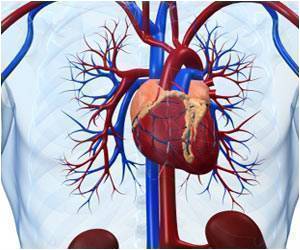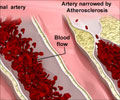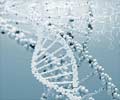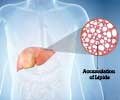A one-dose method for delivering gene therapy into an arterial wall effectively protects the artery from developing atherosclerosis despite ongoing high blood cholesterol.

Medicine has been at an impasse in the search for therapies that prevent plaque growth and rupture. Statin drugs that lower bad cholesterol work, but they have not eliminated heart attacks and strokes, must be taken daily for life, and some patients do not tolerate statins.
Trials of newer interventions such as niacin have been disappointing, according to Dr. David A. Dichek, the study's senior author.
Dichek is the John Locke Professor of Cardiovascular Research at the University of Washington (UW) and associate director for research in the Division of Cardiology, UW Department of Medicine. Dichek practices cardiology at UW Medicine.
"Introducing into the blood vessel wall genes that protect against atherosclerosis is potentially an effective means of preventing or reversing plaque formation and inflammation," Dichek said. "As applied in our study, the introduced genes can produce proteins that counteract the fundamental processes that drive atherosclerosis, including preventing lipid accumulation inside the artery wall and decreasing recruitment of inflammatory cells. We found both of these effects."
Gene transfer would move the production of the therapeutic "drug" (in this case a therapeutic gene) directly to the site of atherosclerosis development: the blood vessel wall. The approach maximizes delivery of the drug to the artery wall and minimizes side effects in the rest of the body, the research team noted.
Advertisement
This substance is apolipoprotein A-1, or apoA-1. It pumps out harmful cholesterol from the scavenger-type cells that ingest fats and congregate in early atherosclerotic lesions.
Advertisement
Lack of a suitable vector to transfer apoA-1-manufacturing genes into the cells lining the arterial wall has hampered the progress of this approach. Normally apoA-1 is produced by cells in the liver, stomach and intestine and enters the artery wall only after circulating through the blood.
The UW researchers successfully used a helper-dependent adenovirus (HDAd) as the vehicle to transfer a genomic clone of rabbit apo-A1 into the carotid artery. This large blood vessel sends oxygenated blood to the brain. After the vector was infused into the artery, the gene was taken up almost exclusively by the cells in the thin layer that lines the carotid's inner surface and is in contact with circulating blood.
At two weeks, atherosclerosis in the carotid artery, as measured by lesion size and lipid content, was minimal and similar in fat-fed rabbits with or without gene therapy. Between weeks two and four, disease measurements increased in control arteries, but were stable or decreased in treated ones.
A lengthier study of chow-fed rabbits revealed that apo-A1 production from a treated artery continued for at least 48 weeks after a single dose of gene therapy.
The researchers concluded, "HDAd vectors provide for prolonged, stable expression of therapeutic transgenes in the artery wall. The transgene's production of apo-A1 in cells lining the artery wall significantly retards atherosclerosis."
What made this approach continually effective – far longer than reported for any other gene therapy efforts of this type – were the type of gene delivery vector and the type of receiving cell. Past attempts at gene therapy for atherosclerosis delivered to the artery wall were effective for only a few days. Then body's immune system recognized and wiped out the foreign protein vector.
The HDAd vector, and the production of Apo-1, persisted because, unlike most other vectors, HDAd does not produce any viral proteins. It remains under the radar of the immune system and does not provoke serious inflammation. Also, the long-living cells that took up the gene transfer have very low turnover and proliferation rates. Even if some initial cell loss occurs after vector infusion, most of the cells seem to stay alive at the site of gene therapy, for the duration.
Another hopeful experimental finding: This vector didn't set up gene factories in other parts of the body. The vector genome was at or below the limit of detection in multiple samples of different tissues and organs. Its presence in the artery didn't upset normal blood values. Keeping vectors restricted "on location" can avoid provoking harmful systemic inflammatory reactions or other unwanted side effects.
The researchers plan to test whether HDAd treatment provides persistent protection against atherosclerosis (at least six months in fat-fed rabbits) and test whether HDAd can be efficiently delivered into vein segments before surgically grafting the veins into the arterial circulation. Vein grafts are commonly used to bypass blocked heart arteries; however, the effectiveness of vein bypass grafts is limited by rapid development of atherosclerosis.
"Vein grafts are an attractive setting for gene therapy because they can be treated efficiently and completely after they are removed from the body and before surgical reimplantation," Dichek said.
Overall, this week's reported findings suggest that delivering the ApoA-1 gene once via the HDAd vector might protect blood vessels against atherosclerosis and potentially provide life-long benefits. Further experiments will show whether the approach is effective for years or works in vein grafts. If gene therapy can eliminate or reduce existing plaques, as well as prevent their formation, it would have even greater clinical usefulness.
The researchers pointed out that efficient catheter-based or other targeted delivery of gene therapy to the three main locations where atherosclerosis is most harmful — the carotid, coronary, and femoral (groin) arteries — might significantly reduce disability and mortality from atherosclerosis.
"Localized one-time gene therapy might someday be an alternative or an important adjunct to systemic drugs such as statins that patients take for decades," Dichek said. "In gene-therapy trials for other diseases, one-time treatments have shown efficacy for at least nine years and will likely continue to be effective indefinitely. Because atherosclerosis is a life-long threat, gene therapy that protects blood vessels for a lifetime makes a lot of sense."
Source-Eurekalert













